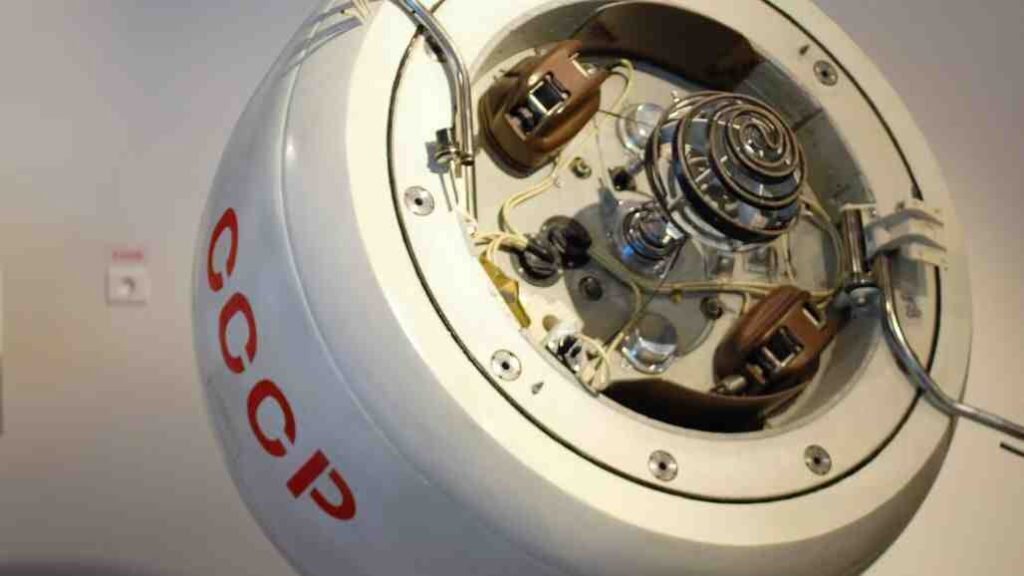Kosmos 482: Soviet Venus Probe Set for Earth Reentry

In a rare celestial event, Kosmos 482, a Soviet-era spacecraft launched in 1972, is expected to re-enter Earth’s atmosphere between May 9 and May 13, 2025. Originally intended for Venus exploration, the probe has been orbiting Earth for over five decades due to a launch failure. Its impending descent has garnered global attention, highlighting concerns about space debris and the challenges of tracking aging satellites.
We will share the final update on Kosmos 482’s re-entry prediction soon. Based on our latest simulation conducted in the afternoon, the anticipated re-entry time now falls within a narrower window on Saturday morning. According to our calculations, Kosmos 482 is expected to re-enter Earth’s atmosphere between 04:20 and 11:12 CEST, with the most probable time centered around 07:46 CEST.
Our updated visualization, which maps the potential flight paths of the capsule during this time frame, significantly narrows down the possible re-entry locations. In fact, the number of potential orbital paths has been reduced by half compared to this morning’s data. With the latest insights, a landing in Africa is now considered highly unlikely. However, no specific geographic region can yet be pinpointed as the definite impact site.
Current predictions suggest that Kosmos 482 will most likely descend into one of Earth’s oceans, given the revised trajectory and limited number of viable re-entry paths.
A Brief History of Kosmos 482
Kosmos 482 was part of the USSR’s ambitious Venera program, aimed at exploring Venus. Launched on March 31, 1972, from the Baikonur Cosmodrome, the spacecraft was designed to deliver a lander to Venus’s surface. However, a malfunction in the Blok L upper stage prevented it from escaping Earth’s gravity, leaving it stranded in a highly elliptical orbit. The mission’s failure was concealed by assigning it the “Kosmos” designation, a common practice for unsuccessful Soviet space endeavors.
Why Kosmos 482’s Reentry Matters
Unlike typical satellites that burn up upon reentry, Kosmos 482’s descent module was built to withstand Venus’s extreme atmospheric conditions. Weighing approximately 495 kg and equipped with a robust heat shield, it’s likely to survive reentry and reach Earth’s surface intact. This durability raises concerns about potential impact zones and the risks associated with uncontrolled reentries.
Predicting the Reentry: Challenges and Estimates
Tracking the exact time and location of Kosmos 482’s reentry is complex. Factors like solar activity, atmospheric drag, and the spacecraft’s deteriorated state contribute to uncertainties. Current predictions suggest reentry will occur around May 10, 2025, with potential impact zones spanning latitudes between 52° North and 52° South. This range includes vast oceanic areas and several populated regions, but the probability of it landing in a densely inhabited area remains low.
Historical Precedents and Potential Impact
This isn’t the first time fragments of Kosmos 482 have returned to Earth. Shortly after its failed launch, parts of the spacecraft, including titanium spheres, landed in New Zealand without causing harm. Given Earth’s vast oceans and uninhabited regions, experts believe the upcoming reentry poses minimal risk to human life. However, the event underscores the broader issue of space debris and the need for improved tracking and mitigation strategies.
Global Efforts in Monitoring Space Debris
Agencies like NASA, the European Space Agency (ESA), and various international organizations are closely monitoring Kosmos 482’s trajectory. Advancements in satellite tracking and predictive modeling have enhanced our ability to forecast reentries, but challenges persist, especially with aging spacecraft lacking modern telemetry. The situation emphasizes the importance of international collaboration in addressing space debris and ensuring the safety of both space operations and terrestrial environments.
Conclusion
The anticipated reentry of Kosmos 482 serves as a poignant reminder of the enduring legacy of early space exploration and the ongoing challenges posed by orbital debris. As we advance further into the space age, proactive measures, international cooperation, and responsible spacefaring practices will be crucial in safeguarding our planet and the orbital environment.